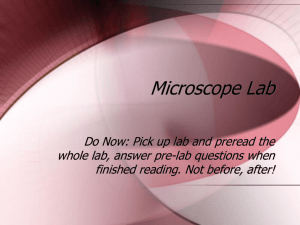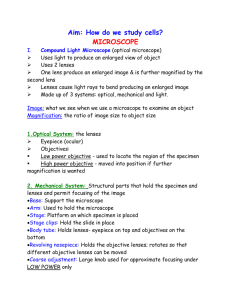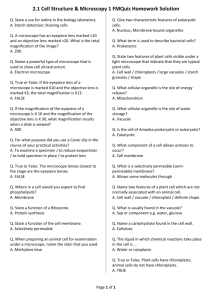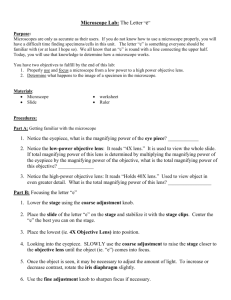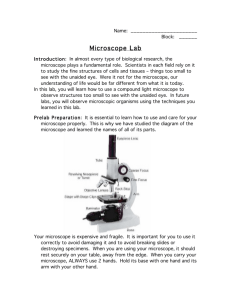Microscope Quiz Study Guide Eyepiece – Contains the magnifying
advertisement
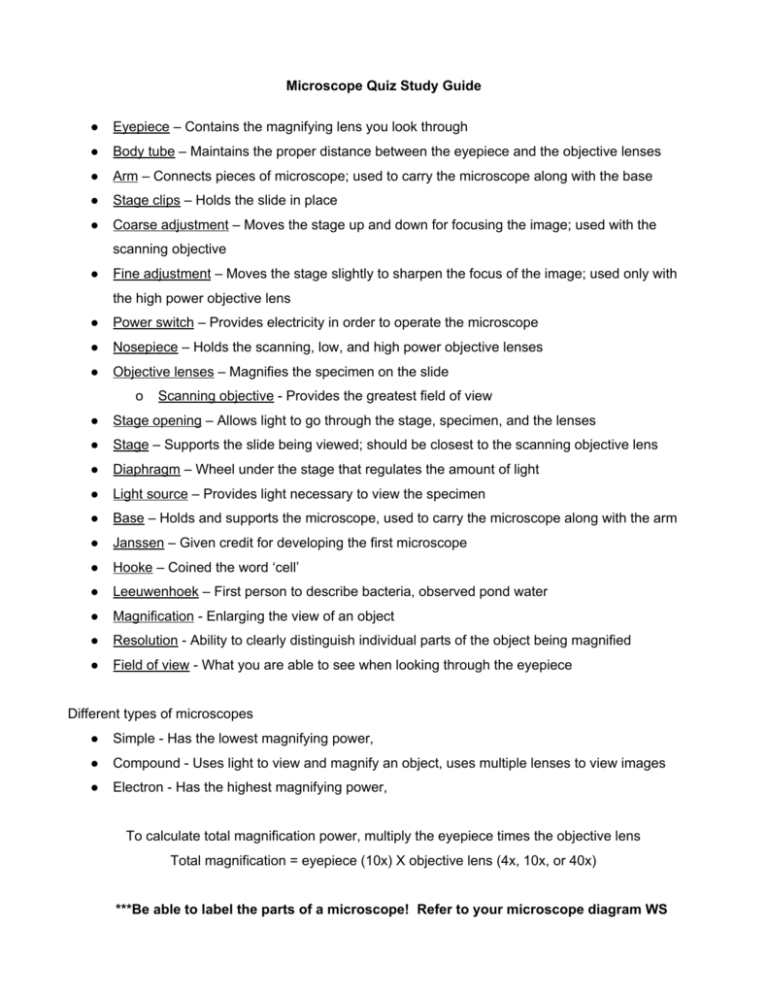
Microscope Quiz Study Guide ● Eyepiece – Contains the magnifying lens you look through ● Body tube – Maintains the proper distance between the eyepiece and the objective lenses ● Arm – Connects pieces of microscope; used to carry the microscope along with the base ● Stage clips – Holds the slide in place ● Coarse adjustment – Moves the stage up and down for focusing the image; used with the scanning objective ● Fine adjustment – Moves the stage slightly to sharpen the focus of the image; used only with the high power objective lens ● Power switch – Provides electricity in order to operate the microscope ● Nosepiece – Holds the scanning, low, and high power objective lenses ● Objective lenses – Magnifies the specimen on the slide o Scanning objective ­ Provides the greatest field of view ● Stage opening – Allows light to go through the stage, specimen, and the lenses ● Stage – Supports the slide being viewed; should be closest to the scanning objective lens ● Diaphragm – Wheel under the stage that regulates the amount of light ● Light source – Provides light necessary to view the specimen ● Base – Holds and supports the microscope, used to carry the microscope along with the arm ● Janssen – Given credit for developing the first microscope ● Hooke – Coined the word ‘cell’ ● Leeuwenhoek – First person to describe bacteria, observed pond water ● Magnification ­ Enlarging the view of an object ● Resolution ­ Ability to clearly distinguish individual parts of the object being magnified ● Field of view ­ What you are able to see when looking through the eyepiece Different types of microscopes ● Simple ­ Has the lowest magnifying power, ● Compound ­ Uses light to view and magnify an object, uses multiple lenses to view images ● Electron ­ Has the highest magnifying power, To calculate total magnification power, multiply the eyepiece times the objective lens Total magnification = eyepiece (10x) X objective lens (4x, 10x, or 40x) ***Be able to label the parts of a microscope! Refer to your microscope diagram WS




